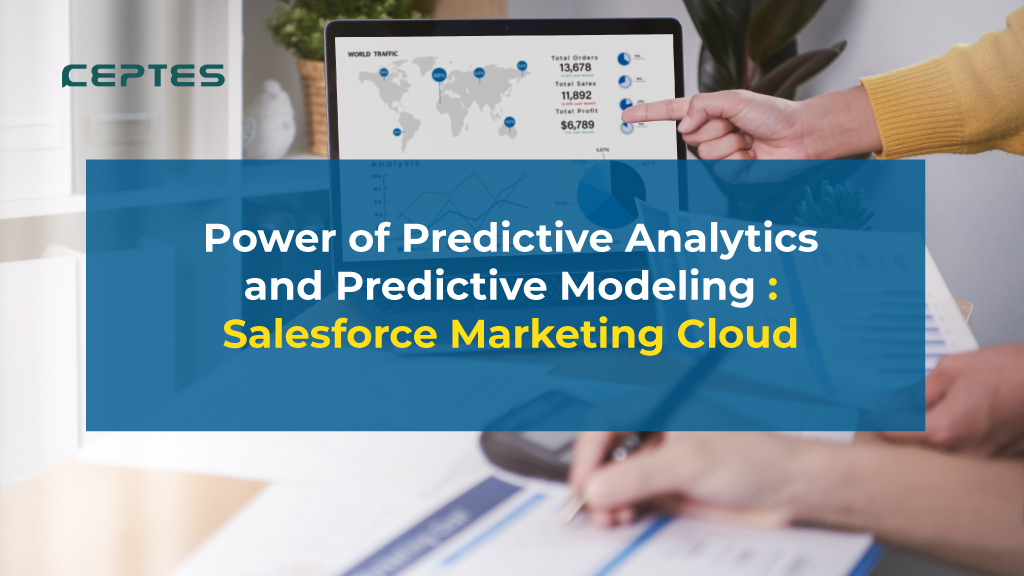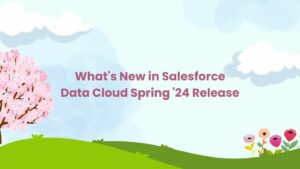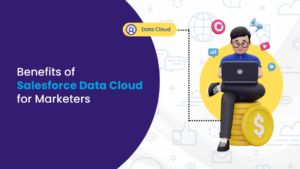Effective marketing requires you to first understand the right audience for your message, and how to best communicate with them based on their preferences and behavior. Many B2C businesses have recently begun to use predictive marketing analytics. A method called predictive marketing employs data analytics to identify the marketing tactics and plans that have the best chance of being successful.
Salesforce Marketing Cloud helps you just that! With the power of Predictive Analytics and Predictive Modelling on Salesforce, you can easily customize and personalize material provided via email and the web by understanding each customer’s preferences and behavior.
What is Salesforce Marketing Cloud?
Salesforce Marketing Cloud is a marketing automation software that helps businesses in increasing the effectiveness of their marketing initiatives. Marketers can run successful marketing campaigns, do effective management, and build healthy customer relationships. It offers firms a range of analytics and digital marketing automation services.
Without a doubt, Salesforce Marketing Cloud is one of the best digital marketing tools to improve any company’s marketing strategies. With just one click, businesses can send personalized mass emails to a range of potential clients. Other key features of Salesforce Marketing Cloud are:
- Customers can be engaged by users through several channels, including email, social media, the web, and mobile phones.
- Align email and advertising campaigns
- Create seamless, integrated customer journeys for all touchpoints
- Strengthened data security
- Utilize the information to capitalize on your brand’s online presence.
- All data on the Salesforce platform is accessible.
- Forecast sales figures and get detailed analytics insights
Predictive Analytics
Predictive Analysis allows businesses to foresee what is likely to occur in the future by using patterns in the data they already have. With the addition of artificial intelligence methods like machine learning into predictive analytics tools, businesses can now analyze enormous amounts of data quickly, improving the precision and utility of prediction models.
Here is one instance. Each customer’s individualized recommendations are available on Amazon’s landing page. These customers’ past purchases have led to the collection of data, which Amazon analyzes to predict potential future purchases. This results in unique recommendation output. The recommendations get more precise the more a customer or potential customer buys. Thanks to predictive marketing, this results in higher sales and better customer satisfaction.
|
Read more: SALESFORCE MARKETING CLOUD: AN ENSEMBLE KIT FOR ENHANCED MARKETING |
If you see around you, you will realize that you are surrounded by recommendations that are likely the result of predictive analysis. All the big companies are now using these data insights to create personalized journeys for their customers and increase their sales. With Predictive Analysis, you can:
- You can segment your audience using predictive analytics based on their firmographics, interests, firmographic behavior, or any other factor.
- Using the customer data, develop identification models. This will assist you in locating and focusing on prospects who are similar to your current clients.
- By removing uncertainty, speculation, and intuition from the forecasting process, as well as the corresponding mistakes, the most likely conclusion can be determined.
- A website can transform from a static, one-size-fits-all solution to a more customized, dynamic one thanks to web predictive marketing. The website may gather information about a user as soon as they click on something, gather information as it is provided, and provide real-time recommendations, which will enhance conversions.
- Predictive marketing research can be used in email campaigns to send customers customised communications in their inboxes.
- Predictive advertising divides prospective customers into extremely narrow interest groups and demographics using marketing data gathered from numerous sources. It determines which adverts would be most effective with which groups and delivers tailored ad content marketing goods or services that a particular customer might be prone to purchase.
Businesses can predict customer behavior across sales, marketing, and service channels by using their CRM. Finding cross-selling opportunities can entail examining previous client behaviors, such as product usage and spending. Or to figure out how to make each customer’s view of the items, offers, or content more effective. For instance, based on a user’s viewing history, the streaming service Netflix recommends shows they would like.
 Predictive Modelling
Predictive Modelling
Whether used in marketing or other functional areas, predictive analytics solutions all essentially operate in the same way: They collect data—the more the better—and then use statistical modelling and machine learning techniques to explore that data for trends.
The tools further evaluate the data using predictive modelling approaches to project expected outcomes in the future using knowledge of past behavior.
There are three main types of predictive models:
- Decision Trees: Decision trees employ a tree-shaped figure to show how several options might pan out, including how one decision might influence others.
- Regression: Regression analysis uses statistics to explain the connections between several variables, such as stock prices and commodity prices.
- Neural Networks: Neural networks are sophisticated algorithms created to simulate how the human brain functions and to find nonlinear patterns in data.
In actuality, predictive analytics tools are typically software programs that let users mine huge amounts of data to discover useful connections between causes and effects. Additionally, they enable users to form intelligent predictions based on a greater comprehension of the data at hand. Following that, organizations can use and distribute these projections across departments.
Salesforce and Predictive Analytics & Predictive Modeling
With Salesforce Marketing Cloud, you can use the power of artificial intelligence to predict consumers’ likely engagement and target the optimal audiences for your marketing offers.
Einstein begins by analyzing your subscriber base and predicts their engagement across four behaviours, i.e.
- Their likelihood to open an E-mail
- Click an E-mail
- Unsubscribe from your list
- Convert on your website
These four behaviors represent a consumer’s likelihood to take that action in the next 14 days and are refreshed daily. You can also see how engaged your subscriber base is compared to overall email industry benchmarks.
To see what factors are influencing a particular predicted behavior, you can go to the email and click the prediction detail page, where you will have access to the top positive and negative predictors from the engagement model along with their relative strengths of influence.
The most crucial step in maximizing the benefits of a predictive analytics system is choosing the appropriate predictive analytics model. Consider a retailer that wants to lower customer churn as an example. The same predictive analytics methods that a hospital uses to forecast the number of patients who will be admitted to the emergency room over the following ten days might not be helpful to them.
Predictive Models can help marketers to:
- Infer preferences of the client.
Create a behavioral profile for each consumer based on their observed clicks and activities that represent their preferences for the products and information.
- Identify Content that works
Automatically select the following products or content for anyone. Combine Salesforce Einstein’s machine learning algorithms with customer profiles.
- Make experiences that are tailored.
Encourage 1-to-1 conversations by automatically distributing predictive material via email, online, or mobile apps. Einstein tools in Salesforce Marketing Cloud give you “insights and data” to guide the “content and timing” of your marketing initiatives. Businesses can tailor every encounter by using robust artificial intelligence (AI) features to understand the engagement and behavior of their customers.
- Knowledge and triggers
Your data is combed through by data mining technologies, which may turn up some hidden patterns and trends that would be otherwise impossible to identify. For instance, your marketing experts can discover precisely what has to be adjusted to improve the performance of their campaigns across all channels.
Summing Up
Businesses will be able to extract even more value from their raw data by using predictive analytics and predictive models across the board. They will be able to anticipate the future by turning it into pure gold nuggets.
Interested more in knowing about the power of Predictive Analytics and Predictive Modeling in Salesforce Marketing Cloud? Contact us here.









